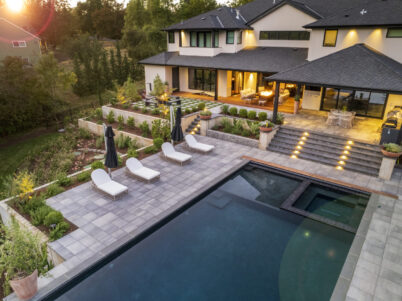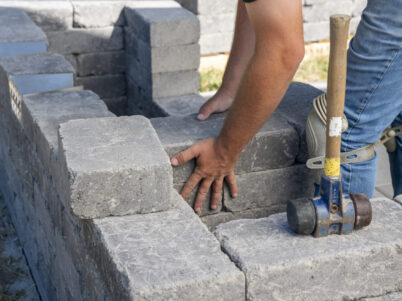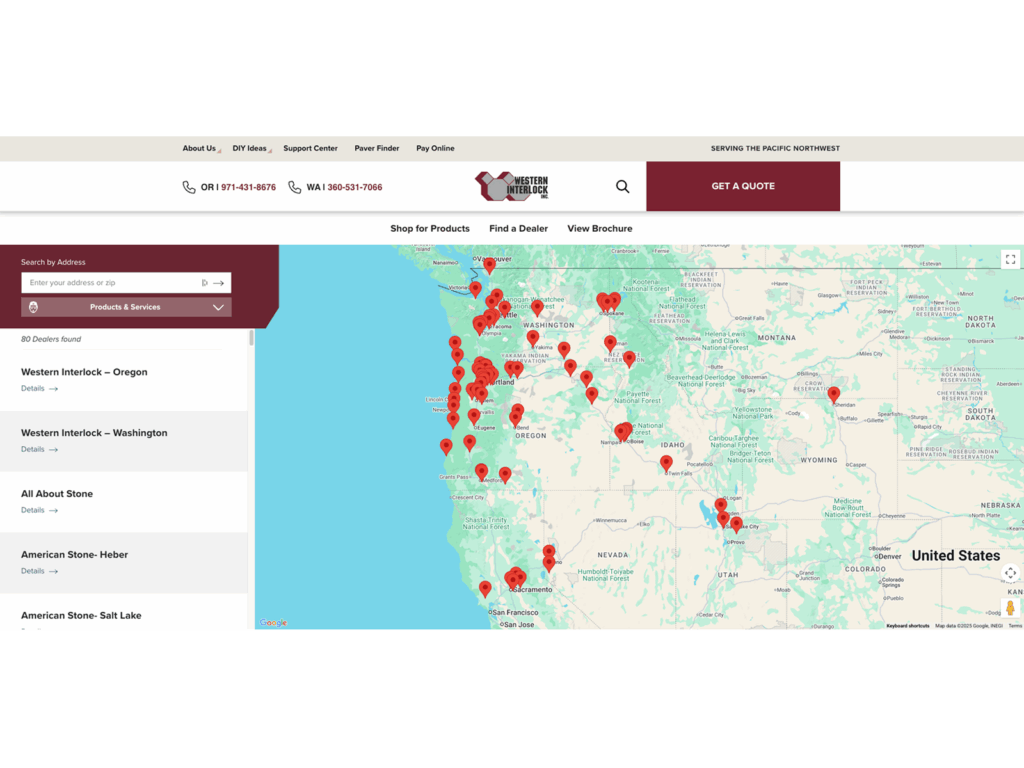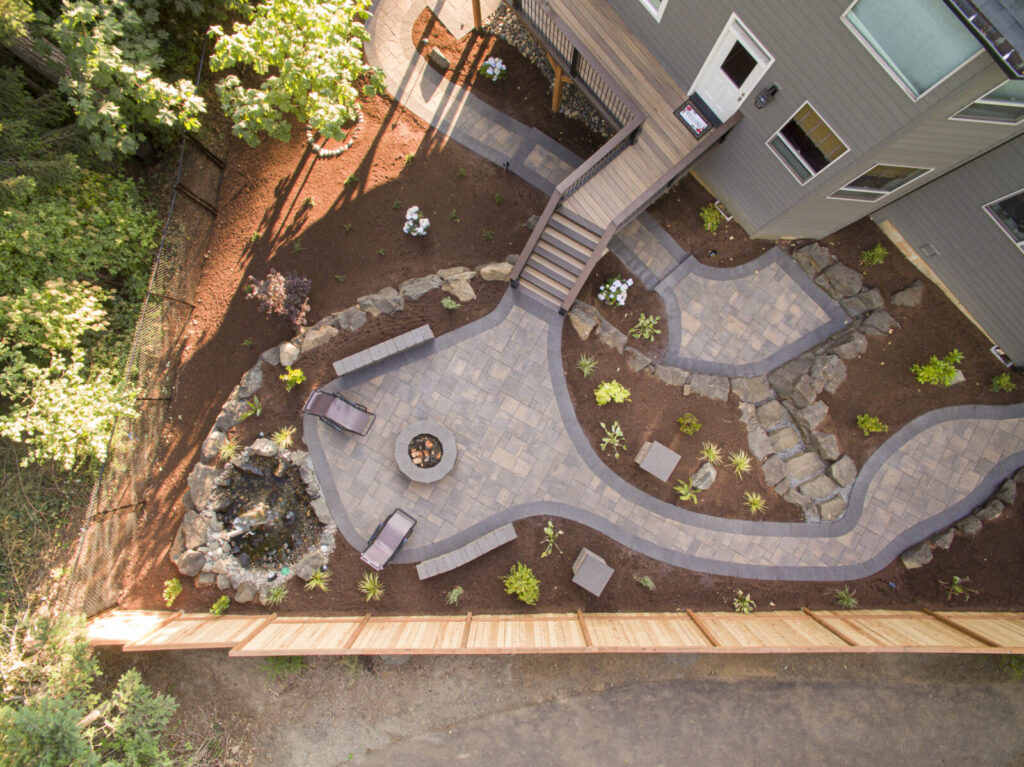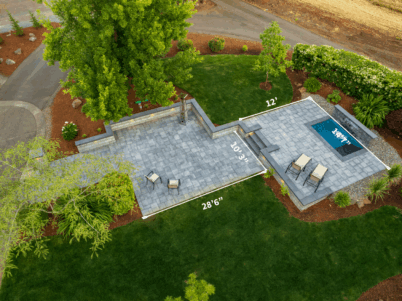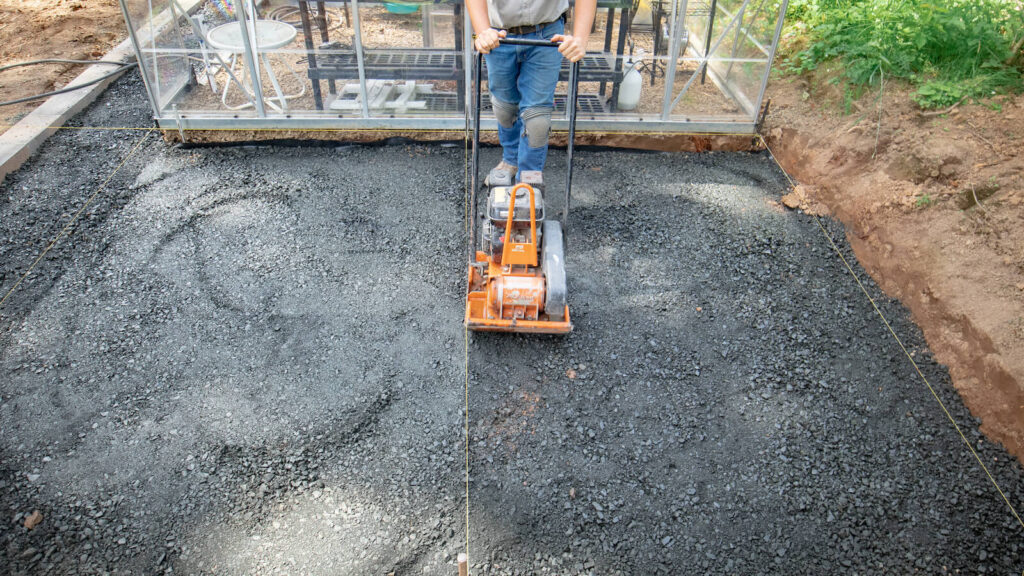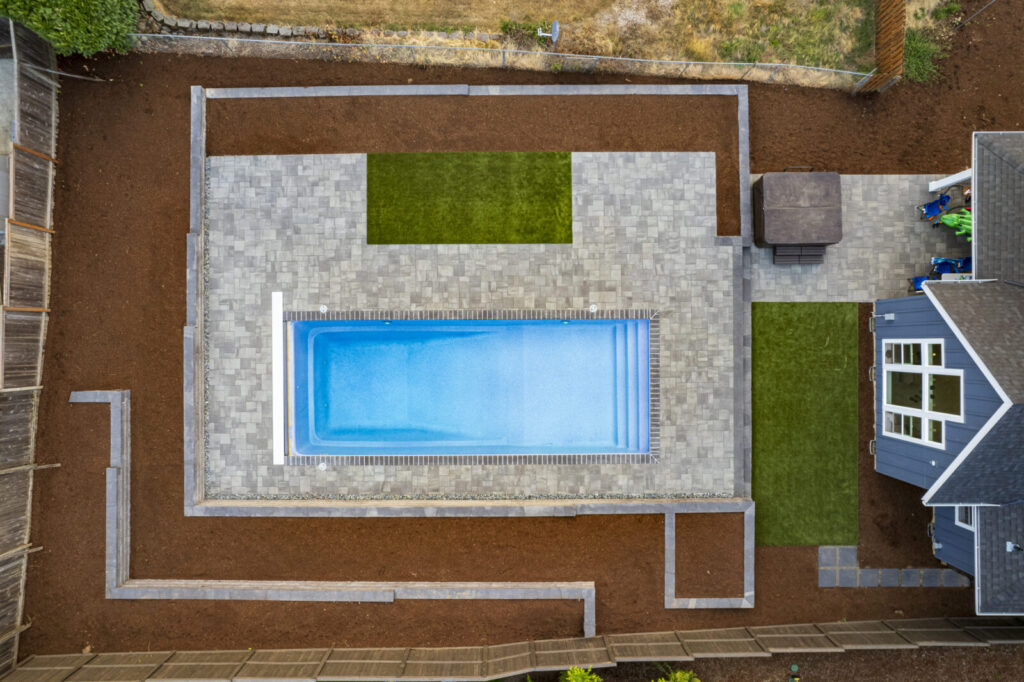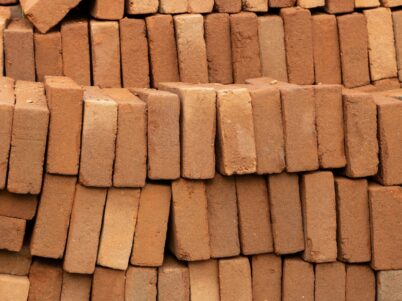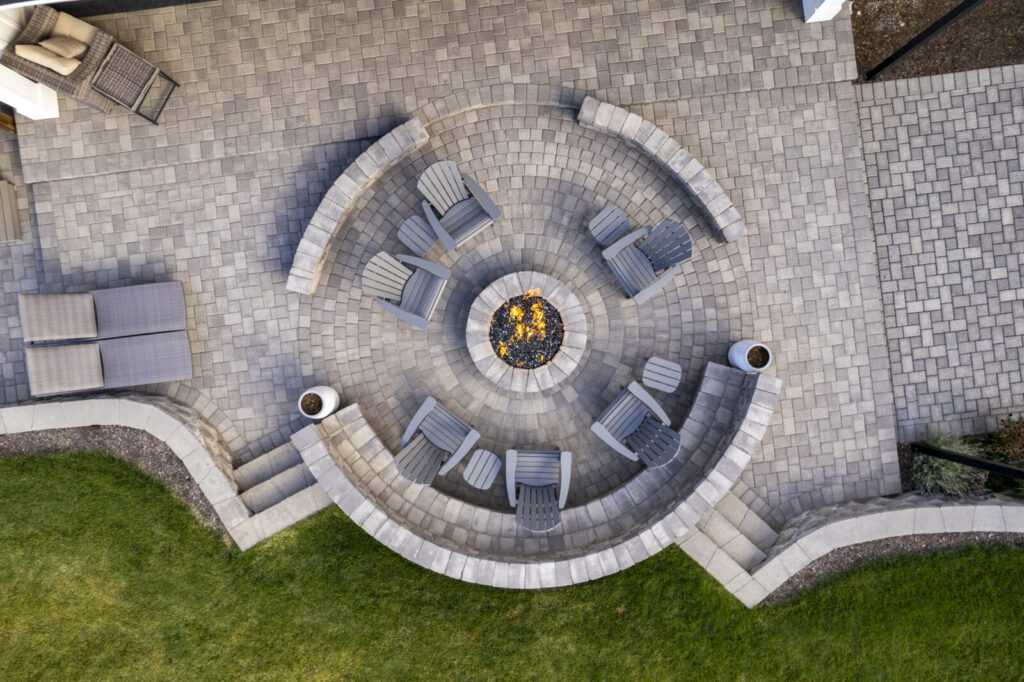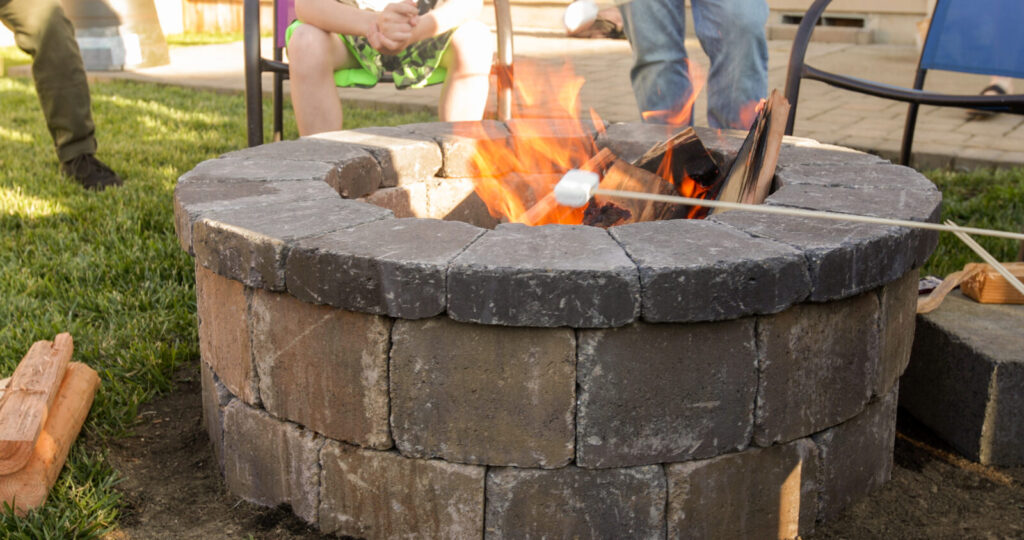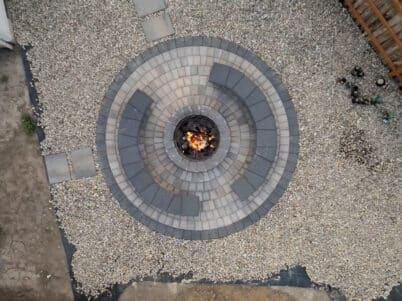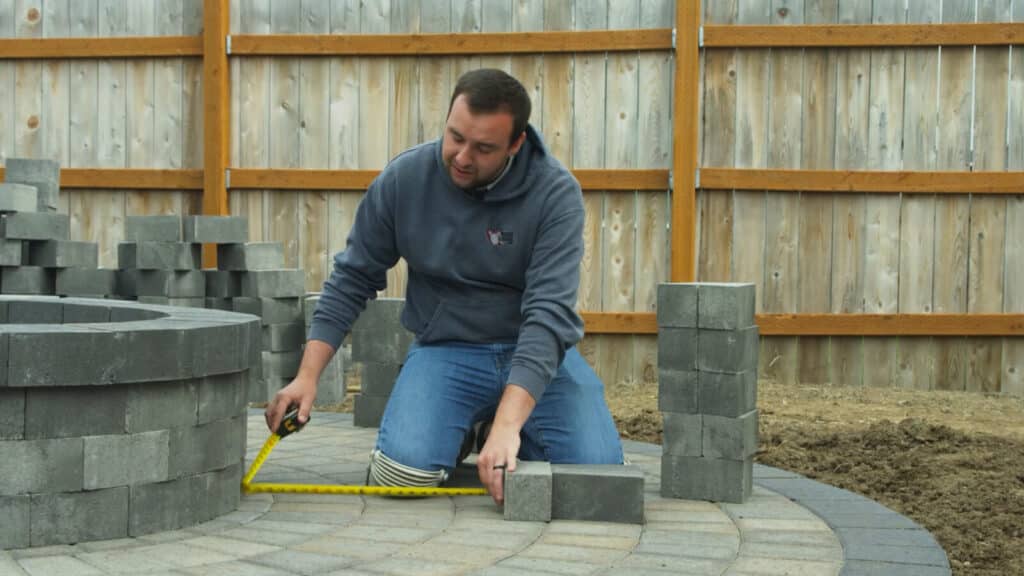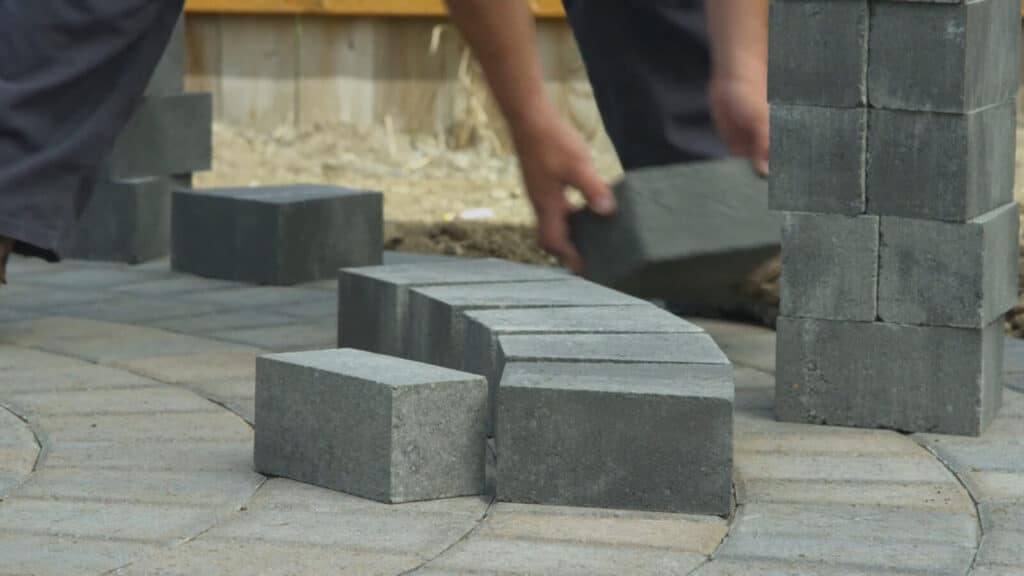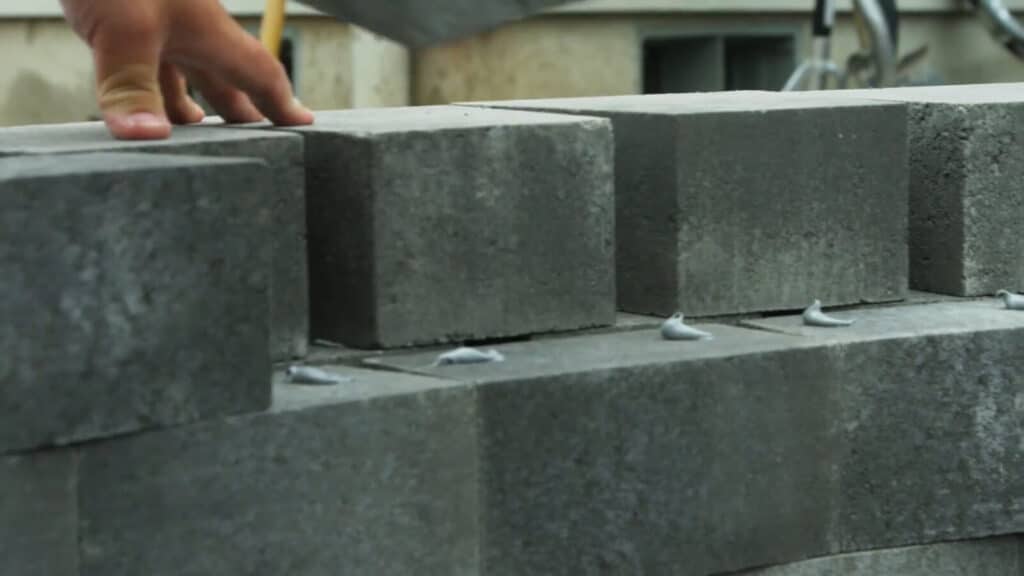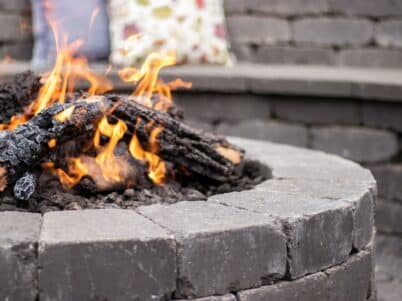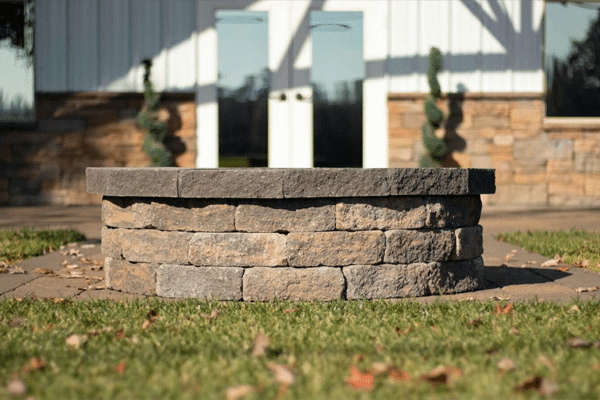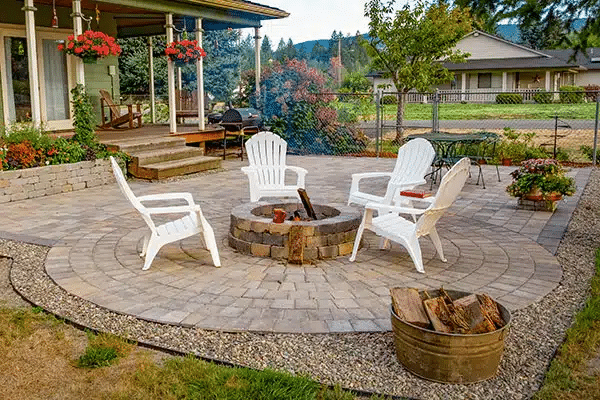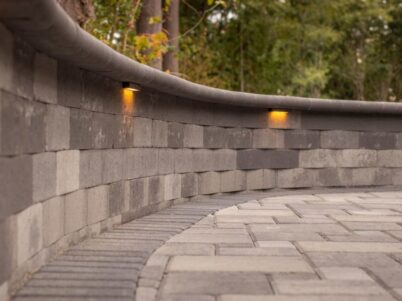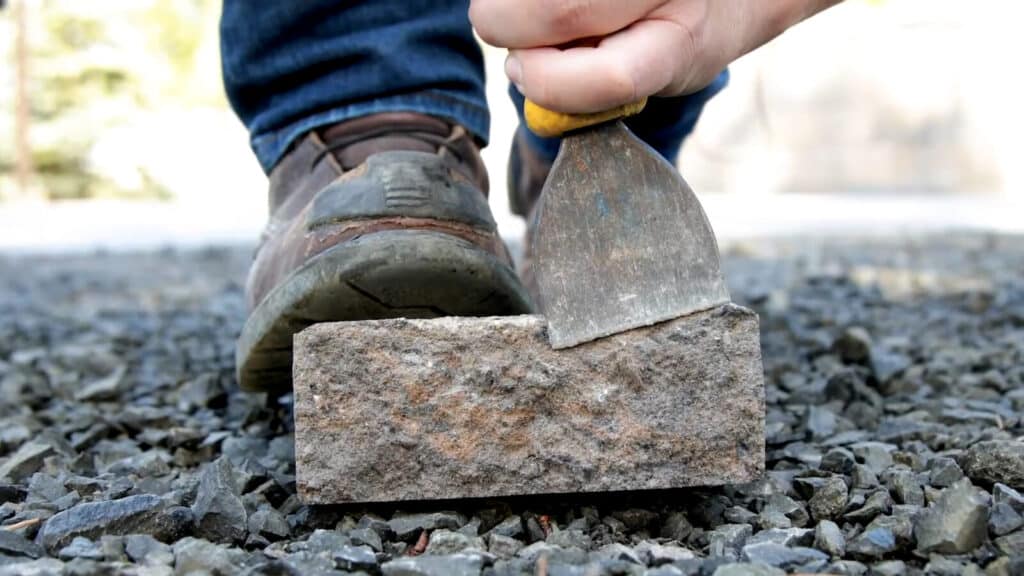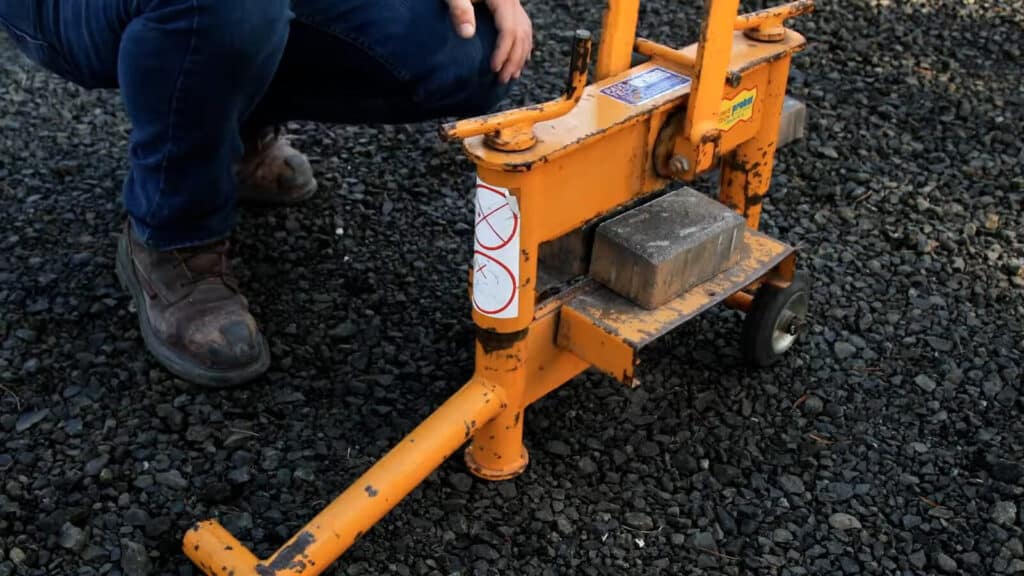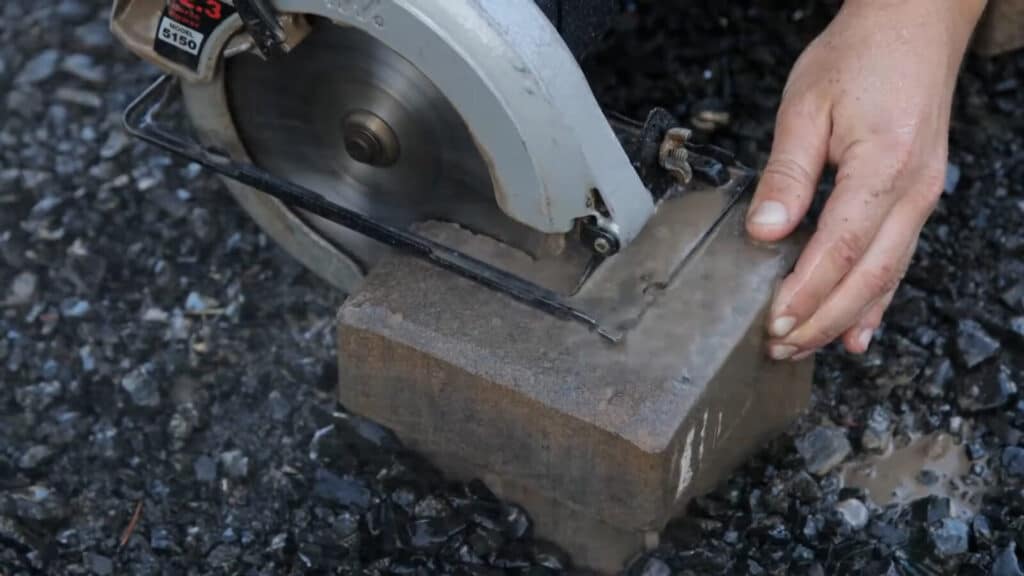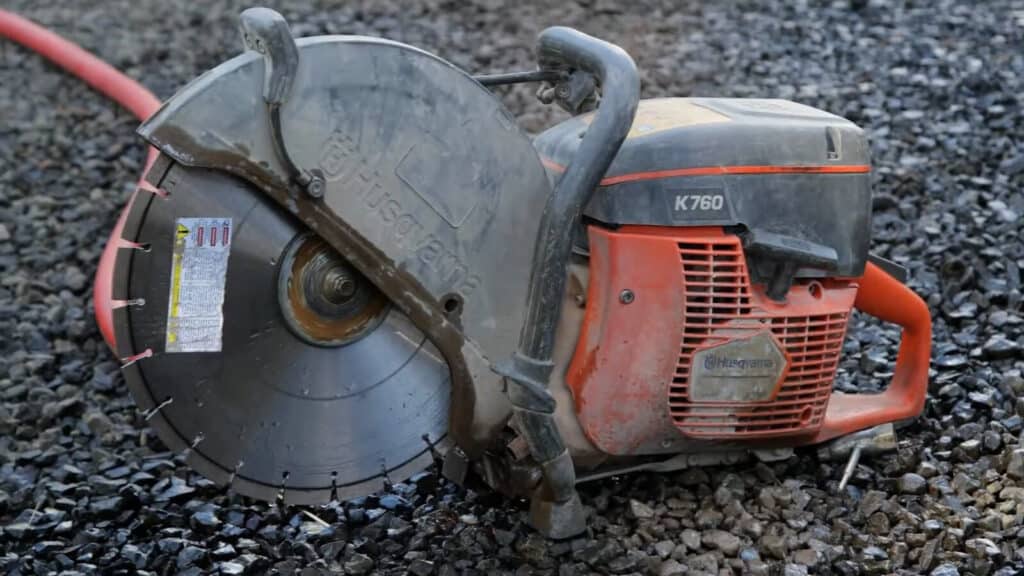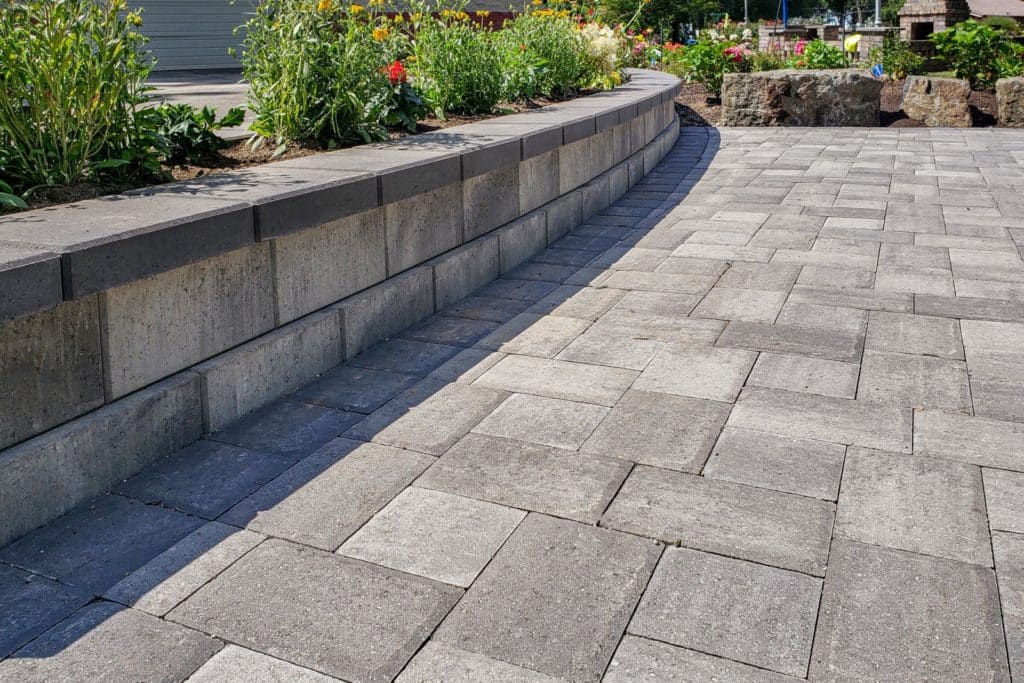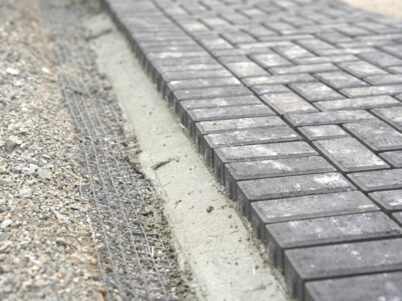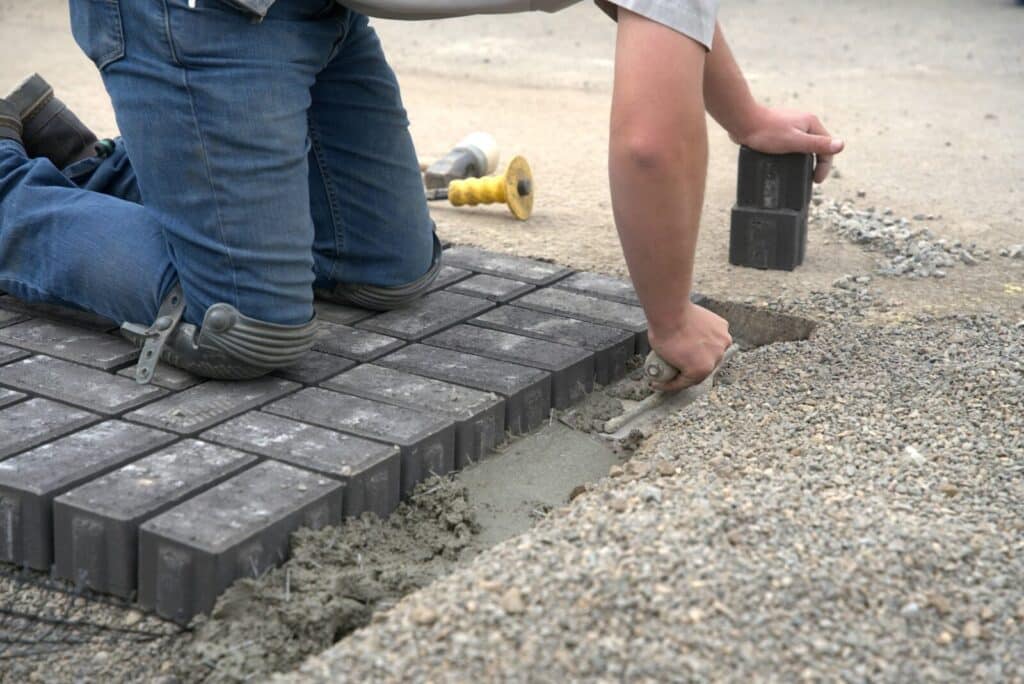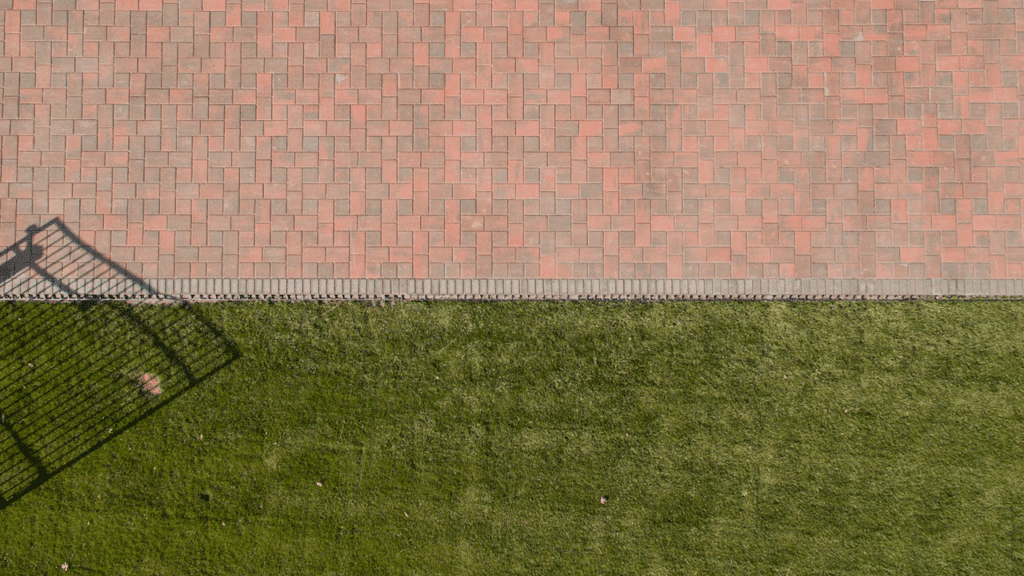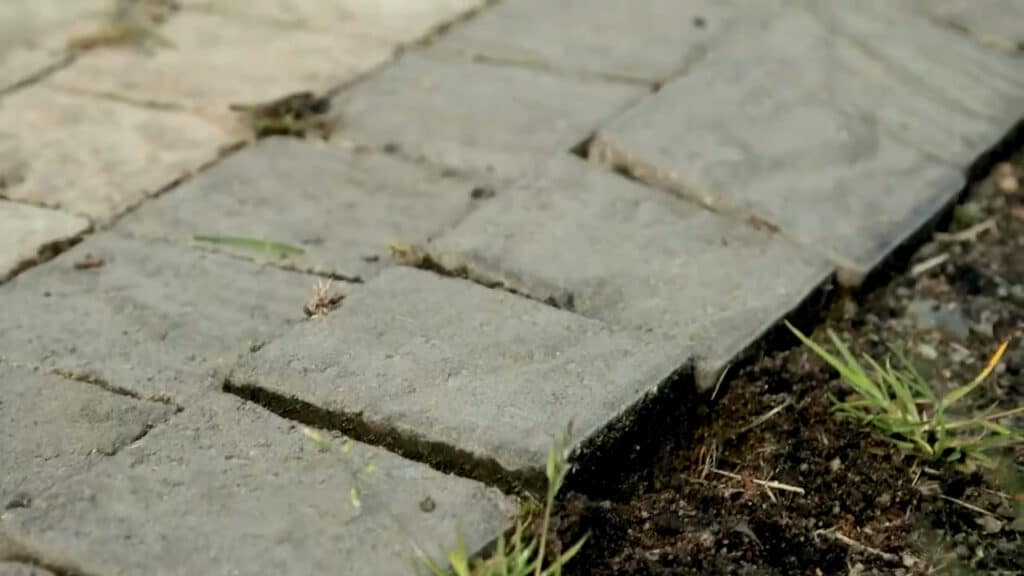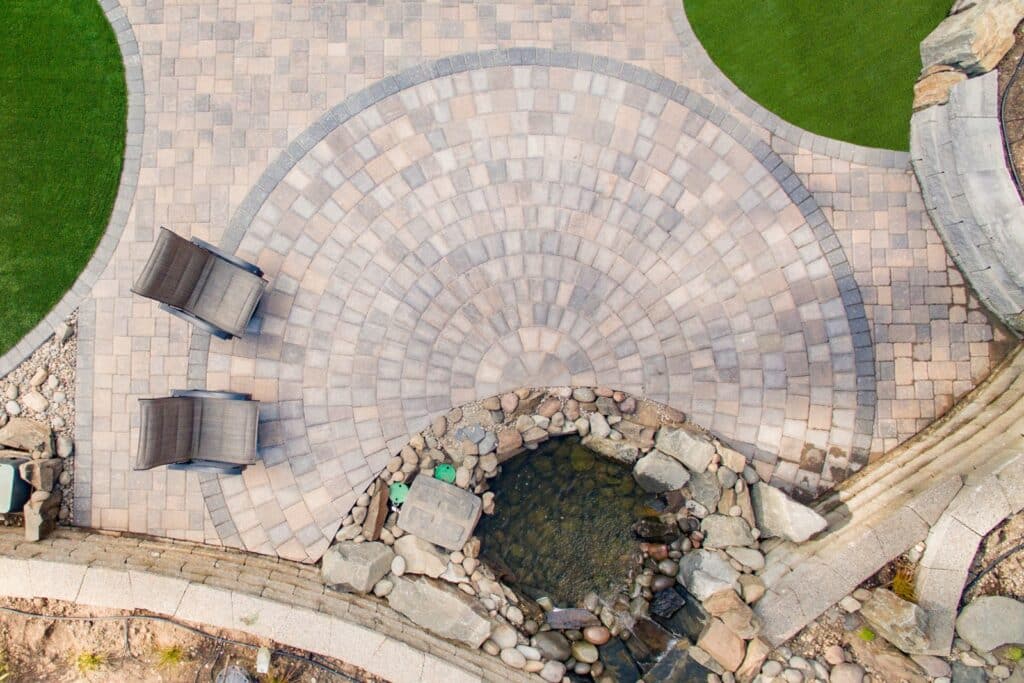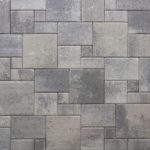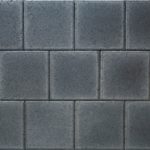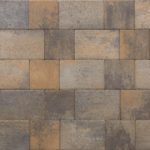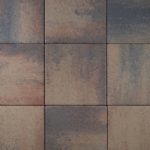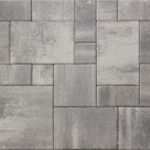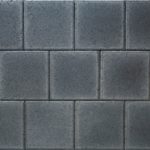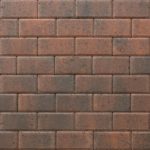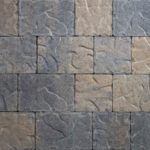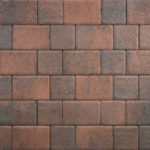Western Interlock has manufactured high-quality concrete paving stones in the Pacific Northwest since 1990. Those decades of innovation mean our pavers keep their rich color even when exposed to chlorine or salt, shed water quickly to reduce slipping, and stand up to harsh freeze–thaw cycles. When designing paving stones around a pool, the right combination of product, thoughtful layout, and solid installation results in a surround that is as safe and durable as it is beautiful. Below you’ll find a complete homeowner’s guide—covering planning, product selection, pattern ideas, and maintenance—so you can create a pool deck that looks great on day one and every day after.
1. Plan Your Pool Deck & Designing Paving Stones Around A Pool
A smooth build starts long before the first paver is set.
Assess the site
Begin by taking detailed measurements of the pool’s shape, the surrounding landscape, and existing grades. Your paver surface needs a gentle slope—about 1–2 % away from the pool edge—to prevent puddling and to keep splash-out water moving toward drains or planting beds.
Coordinate with pool construction
If you are pouring a new pool shell, set the finished paver elevation while the excavation is still open. This avoids awkward step-downs later and lets you integrate features like retaining walls or tiered terraces seamlessly.
Define activity zones
Map out where loungers, dining sets, or fire pits will live. A clear traffic flow around furniture stops bottlenecks and helps you decide where wider pathways or broader landings make sense.
Sketch the layout
On paper—or in a design program—add edge restraints, expansion joints, and any border accents you want. Show how the deck ties into adjoining patios or walkways so the entire hardscape feels like one intentional space.
2. Choose the Right Pavers for Pool Surrounds
The best pool decks strike a balance between long-term performance and everyday comfort.
Material and durability
All Western Interlock pavers are made from dense, high-strength concrete that resists chlorine and salt, so you don’t have to worry about fading or surface breakdown.
Slip resistance
Look for lightly textured faces or subtle cobble patterns that add grip when feet are wet. Camino Stone, for example, has a gentle ripple that feels comfortable underfoot yet helps reduce slips.
Color and heat
Lighter tones stay cooler in direct sun. Blended hues—such as our Jamestown or Cambridge mixes—hide minor scuffs and stains while pairing nicely with popular pool-tile colors.
Edge safety
A rounded bullnose coping such as Monaco Coping creates a smooth, comfortable edge that protects swimmers and prevents chipping.
Adequate thickness
For residential pool decks we recommend pavers at least 60 mm (2⅜ in) thick. They handle heavy foot traffic and the occasional furniture move without cracking.
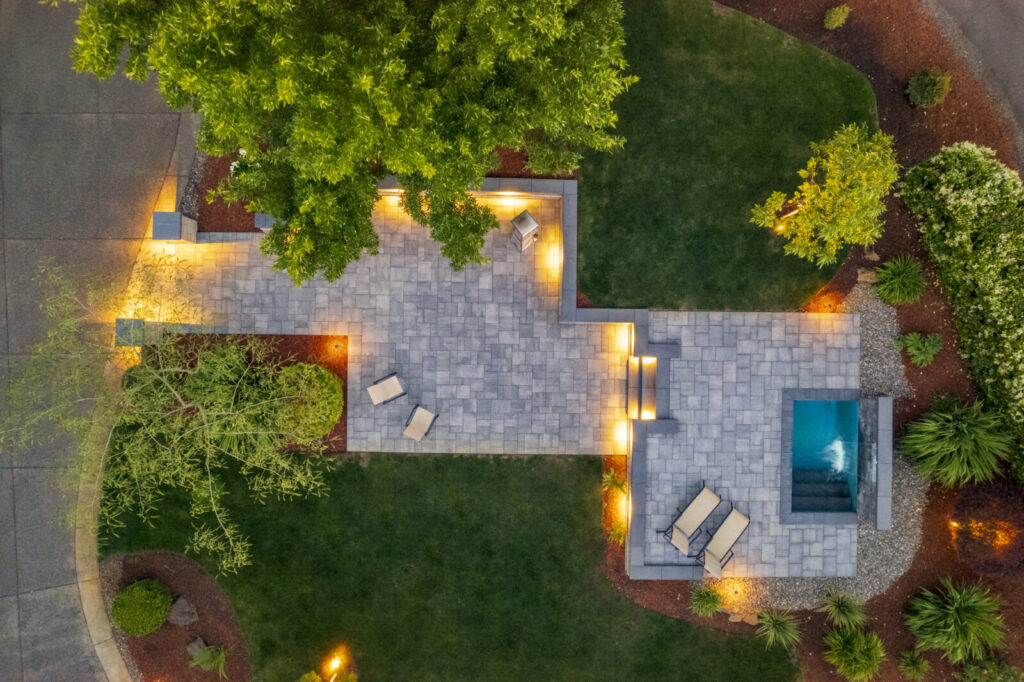
3. Design Styles: Colors, Textures, and Layout Patterns
With the basics covered, it’s time to make the deck a visual highlight.
Color palettes
Neutral grays and tans let the water take center stage and blend naturally with most home exteriors. If your coping stone is light, a slightly darker field paver provides pleasing contrast without absorbing excess heat.
Patterns that work
Running bond and basketweave layouts are classics for a reason—they’re simple, efficient, and look great at any scale. For more texture, use our Five-Stone pattern, which mixes Arena, Park & Plaza, and Holland units for a rich, varied canvas.
Border accents
Framing the pool with a single row of City Square pavers—or a contrasting color of the same stone—subtly outlines the water’s edge and helps break up large expanses of decking.
Modern versus traditional textures
Large-format slabs from the La Lastra™ or La Pietra™ collections create a clean, contemporary look. Prefer rustic charm? Camino Stone or Alpine Stone offer an old-world cobble feel that pairs perfectly with natural landscaping.
Timeless inspiration
Herringbone, broad rectangular grids, and mixed-size random layouts all bring scale and character to pool decks. Use half-cuts or Holland fillers where needed to keep lines tight and grout joints uniform.

4. Edging, Coping, and Transition Elements
Details make a deck feel finished—and they protect your investment.
Pool coping
Install Monaco Coping around the pool perimeter for a rounded, non-slip edge. Its consistent thickness means straightforward installation and fewer alignment headaches.
Steps and sunken zones
If your project includes steps into the pool or down to a lower lounge, keep the same paver style and color so the eye reads one cohesive environment.
Border and edge restraints
A contrasting band not only looks sharp; it also hides small cuts at the perimeter. Secure all edges with proper restraints to prevent outward movement over time.
Smooth transitions
Where pavers meet turf, wood decking, or planters, use low retaining blocks or a Soldier course of pavers to stop sand wash-out and keep lines crisp.
Designing Paving Stones Around a Pool: Conclusion and Next Steps
A well-designed pool deck is a harmonious blend of safety, comfort, and style. Western Interlock pavers deliver on all three: slip-resistant textures, chlorine-proof color, and the design flexibility to match any home aesthetic.
Ready to start planning?
- Use our online Paver Project Planning Guide to explore patterns and calculate materials.
- Visit a Western Interlock showroom or authorized dealer to see full-size samples.
- Need expert advice now? Call us at 971-431-8676 or complete the Get a Quote form on our website. Our team will help you choose the right paver, thickness, and color blend so you can enjoy a beautiful, long-lasting pool surround this season—and every season after.
If you’re dreaming of poolside lounging, let’s build a deck that makes every dip unforgettable.


